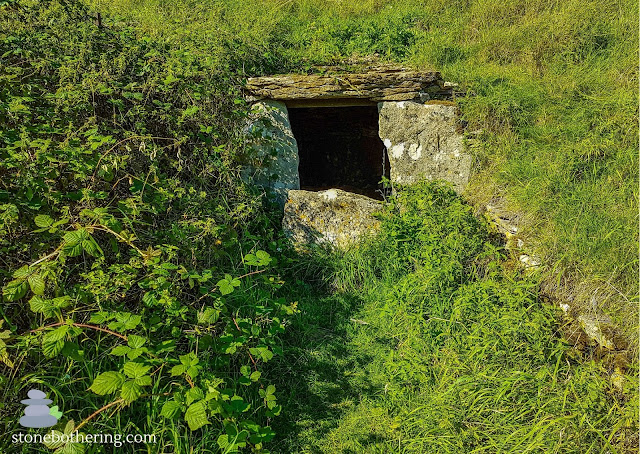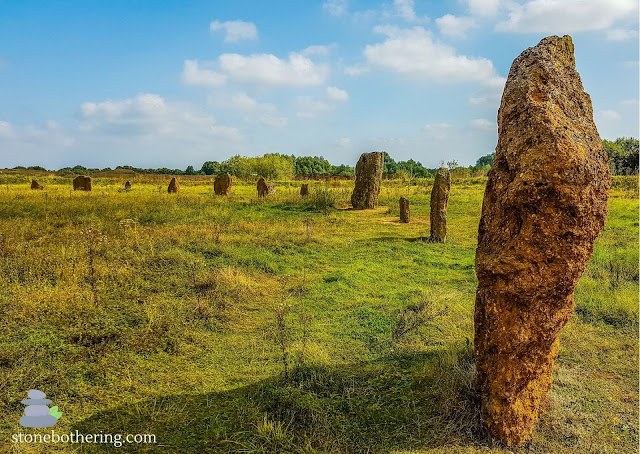Exploring the Ancient Sites of Gloucestershire
Gloucestershire, a county rich in history and natural beauty, is home to a fascinating collection of ancient sites. Among these, the long barrows—prehistoric burial chambers—stand out as a remarkable testament to the region’s Neolithic past. These ancient structures, built thousands of years ago, provide a glimpse into the spiritual and cultural practices of early Britons. In this blog post, we’ll explore five of Gloucestershire’s most significant ancient sites. Whether you're a history enthusiast, a lover of archaeology, or simply curious about the county’s past, these ancient sites offer a journey through time.
BELLAS KNAP LONG BARROW: A MYSTERIOUS MONUMENT
Located near the village of Woodmancote, Bellas Knap Long Barrow is one of Gloucestershire’s most impressive Neolithic burial sites. Dating back to around 3000 BC, this chambered long barrow features a series of burial chambers and is believed to have been used for communal burial practices.
The barrow itself is a striking example of early Neolithic construction, with large stone slabs and a long, narrow passage leading to the burial chambers. Excavations have revealed human remains and artefacts, which provide evidence of the rituals and customs surrounding death in prehistoric times. Bellas Knap is one of the best-preserved long barrows in Gloucestershire and is part of a larger network of Neolithic burial sites in the Cotswolds. Bellas Knap also offers stunning views of the surrounding countryside, making it a serene and reflective place to visit.
MINCHINHAMPTON LONGSTONE: A MONOLITH WITH A RICH HISTORY
The Minchinhampton Longstone, located near the charming town of Minchinhampton, is a solitary standing stone with an intriguing past. This ancient megalith, believed to date back to the Neolithic or early Bronze Age, stands at the entrance to a burial chamber or mound that no longer exists.
The Minchinhampton Longstone is thought to have been part of a larger ritualistic landscape, marking an important site for early settlers. The stone is a significant landmark in the area, offering a tangible connection to the past. Its placement and alignment suggest that it may have been used in astronomical or ceremonial practices.
ULEY LONG BARROW: A MONUMENTAL NEOLITHIC TOMB
Uley Long Barrow, also known as the Uley Bury, is one of the largest and most impressive long barrows in Gloucestershire. Situated near the village of Uley, this Neolithic burial site is renowned for its size and the quality of its preservation. The barrow was constructed around 3500 BC and consists of a long passage leading to multiple burial chambers.
Excavations at Uley Long Barrow have uncovered a wealth of archaeological finds, including human bones, pottery, and flint tools, providing invaluable insights into the burial practices and daily life of Neolithic communities. The site is also surrounded by a larger ritual landscape, with other ancient monuments and stone circles nearby, indicating that Uley was an important ceremonial center. Uley Long Barrow is often referred to as one of the "Cotswold-Severn" type long barrows, a distinctive style of Neolithic tombs found in the area.
NYMPSFIELD LONG BARROW: A SITE OF SPIRITUAL SIGNIFICANCE
The Nympsfield Long Barrow, located near the village of Nympsfield, is another remarkable Neolithic burial site in Gloucestershire. Dating back to around 3000 BC, the barrow consists of a long, rectangular mound with several burial chambers. Like many other long barrows, it was used for communal burials, and human remains have been discovered here during excavations.
What makes Nympsfield Long Barrow particularly significant is its location and alignment. The barrow sits on a hilltop with expansive views over the surrounding landscape, suggesting that it may have had both practical and spiritual significance for the Neolithic people who built it. The site also forms part of a broader network of ancient monuments in the area, providing further evidence of the importance of ritual and burial practices in prehistoric Gloucestershire.
WINDMILL TUMP LONG BARROW: A GATEWAY TO ANCIENT GLOUCESTERSHIRE
Windmill Tump Long Barrow is a fascinating Neolithic burial site that offers visitors a unique glimpse into the burial practices of ancient Britons. The barrow, dating back to around 3000 BC, consists of a large mound and a series of chambers used for communal burials.
What makes Windmill Tump particularly intriguing is its position on a hill, providing panoramic views over the surrounding landscape. The site is also associated with a nearby Bronze Age round barrow, suggesting that it remained an important burial site for centuries. Archaeological findings at Windmill Tump include human remains, pottery, and stone tools, offering valuable insights into the daily lives and burial customs of the region's prehistoric inhabitants. The name "Windmill Tump" is thought to come from the nearby windmill, although the barrow predates it by thousands of years.
WHY VISIT GLOUCESTERSHIRE'S ANCIENT SITES?
Visiting the ancient sites of Gloucestershire is more than just a walk through history; it’s an opportunity to connect with the ancient people who lived in this region thousands of years ago. These sites offer a fascinating glimpse into the spiritual, social, and cultural practices of Neolithic communities, as well as the rich archaeological heritage of the area.
© All rights reserved
.jpg)

.jpg)
.jpg)
.jpg)
.jpg)

